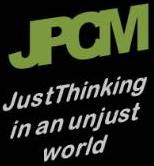The lack of process engineering is one of the main shortcomings of many small, to mid-size, companies today. It is the fact that these organizations have tended to grow their infrastructure around getting tasks done, as opposed to analyzing the business processes involved and resolving them.
To quote from "Beyond Reengineering", by Michael Hammer, "The problems that afflict modern organizations are not task problems. They are process problems. The reason we are slow to deliver results is not that our people are performing their individual tasks slowly and inefficiently ... because some of our people are performing tasks that need not be done at all to achieve the desired result and because we encounter agonizing delays in getting the work from the person who does one task to the person who does the next one."
Process engineering has been a cornerstone of modern management theory of late. Be it Total Quality Management (TQM), qualifying for International Standards Organization (ISO) certification, or adhering to Six Sigma. Today managers are ever eager to improve the functionality and fluidity of their organizations.
This has not been the case for the small, to mid-size, companies that are not littered with MBA's. These organizations tend to be either, extremely entrepreneurial, and, or, overly task structured. And, continually, they are faced with difficult decisions when it comes time to evaluate their organization, or to plan for new growth opportunities.
One of the core problems faced is how can such an organization grow, when it will cost them so much to do so. If they double sales how can they not double their infrastructure?
The answer will very often lie in process engineering. Quite simply a close examination of the tasks that the organization performs to get work done. Often during the examination it is found that such growth is not only feasible with existing personnel, but that sales growth rates could be potentially geometric when compared to infrastructure cost expenditures.
Jim Coburn
Tuesday, April 7, 2009
Subscribe to:
Post Comments (Atom)





No comments:
Post a Comment